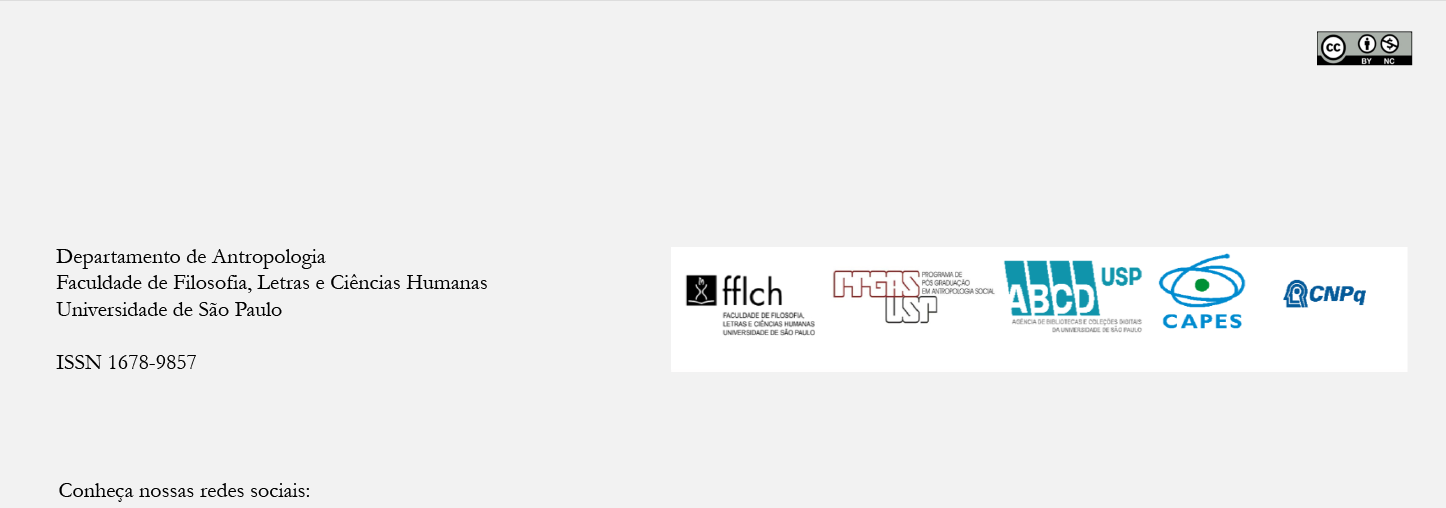In the shadow of the nopal: territorial folds and plant agency in the Altos de Morelos, Mexico
DOI:
https://doi.org/10.11606/1678-9857.ra.2023.199829Keywords:
monocultivo, multisensorialidad, agencia vegetal, ensamblajeAbstract
The objective of this paper is to explore ethnographically the more than human worlds present in the nopal monoculture in Altos de Morelos, Mexico, as well as the differential impact that this plant has on people’s lives. Taking into account the plant turn in posthumanist political ecology and the notion of plant agency, this paper seeks to contribute to the critique of monocultures as ecologically impoverished environments and as an imposition on people’s lives. On the other hand, it is intended to shed light on the way in which the nopal is ontologically positioned through a plant policy that fosters the emergence of territorial domains of conflict, negotiation and friction. The ontological characterization of the prickly pear cactus that is sought to be underpinned does not derive exclusively from human attributions around the plant, but rather, based on the notion of fold, it is sought to understand the material semiotic frameworks in which said monoculture unfolds its relationships in different niches of the northeastern region of Morelos. The axis of the work is found in deciphering the oxymoron that underlies the shadow of the nopal
Downloads
References
ÁVILA SÁNCHEZ, Héctor.2002. Aspectos históricos de la formación de regiones en el estado de Morelos (desde sus orígenes hasta 1930). México, CRIM-UNAM.
BESKY, Sarah and PADWE, Jonathan. 2016. “Placing Plants in Territory. Environment and Society. Advances in Research 7:9-28.
BIERSACK, Aletta. 2006. “Reimagining Political Ecology: Culture/ Power/ History/ Nature”. En BIERSACK, Aletta and GREENBERG, James B. (eds.), Reimagining Political Ecology. Durham y Londres: Duke University Press, pp. 3-42.
BRICE, Jeremy. 2014. “Attending to grape vines: perceptual practices, planty agencies and multiple temporalities in Australian viticulture”. Social and Cultural Geography 15(8):942-965.
CHAO, Sophie. 2020. “A Tree of Many Lives. Vegetal Teleontologies in West Papua”. HAU Journal of Ethnographic Theory 10(2):514-529.
CHAO, Sophie.2021. “The Beetle or the Bug: Multispecies Biopolitics in West Papuan Oil Palm Plantation”. American Anthropologist 123(3):476-489.
DE LA PEÑA, Guillermo. 1980. Herederos de promesas. Agricultura, Política y Ritual en los Altos de Morelos, México, Ediciones de la Casa Chata.
DI DEUS, Eduardo. 2019. “The three that responds: taming the rubber tree”, Vibrant v.16.
DURAND, Leticia y SUNDBERG, Juanita. 2019. “Sobre la ecología política posthumanista”, Sociedad y Ambiente 7(20):7-27.
GALVIN, Shaila. 2018. “Interspecies Relations and Agrarian Worlds”. Annu. Rev. Anthropol. 47:233–49.
GAN, Elaine, BUBANDT, Nils, TSING, Anna and SWANSON Heather.2017. “Introduction: Haunted Landscapes of the Anthropocene”. En TSING Anna, SWANSON Heather, GAN Elaine and BUBANDT Nils (Eds.) Arts of Living on a Damaged Planet. Gosht and Monsters of the Anthropocene. University of Minnesota Press:1-14.
GREENHOUGH, Beth. 2012. “Where species meet and mingle: endemic human-virus relations, embodied communication and more-than-human agency at the Common Cold Unit 1946–90”. Cultural Geographies 19(3):281-301.
HARTIGAN, John. 2017. Care of the Species. Races of Corn and the Science of Plant Biodiversity. University of Minnesota Press.
HEAD, Lesley, ATCHISON, Jennifer, PHILIPS, Catherine and BUCKINGHAM, Kathleen. 2014. “Vegetal politics: belonging, practices and places”. Social & Cultural Geography, 15 (8), 861-870.
HELMREICH, Stefan. 2016. Sounding the limits of life. Essays in the Anthropology of Biology and Beyond, Princeton University Press.
HERNÁNDEZ CHÁVEZ, Alicia. 2010. Historia breve. Morelos, FCE COLMEX.
LATOUR, Bruno.1993. We Have Never Been Modern. Harvard University Press.
MYERS, Natasha. 2019. “From Edenic Apocalypse to Gardens Against Eden. Plants and People in and after the Anthropocene”. In HETHERINGTON Kregg (ed.), Infrastructure, Environment and Life in the Anthropocene. Durham: Duke University Press:115-148.
OGDEN, Laura, HALL, Billy y TANITA, Kimiko. 2013. “Animals, Plants, People and Things. A Review of Multispecies Ethnography”. Environment and Society: Advances in Research:5-24.
RAMOS CHÁVEZ, Héctor. 2011. La producción de nopal como impulsor en la construcción de nuevas dinámicas sociales en la comunidad de Tlalnepantla, Morelos, Tesis de Doctorado, CIESAS.
SAUTCHUK, Carlos. 2018. “Introdução. Técnica em/e/como transformação”. Em SAUTCHUK Carlos Emmanuel (org.). Técnica e Transformação. Perspectivas antropológicas. Rio de Janeiro: ABA Publicações: 11-36.
SMITH, Michael.2010. “La época posclásica en Morelos: surgimiento de los tlahuicas y xochimilcas”, en Varela S. (ed.) (2010), La arqueología en Morelos: Dinámicas sociales sobre las construcciones de la cultura material. Historia de Morelos: Tierra, gente, tiempos del Sur, tomo 2. UAEM, pp.131-156.
TSING, Anna, MATHEWS, Andrew and BUBANDT, Nils. 2019. “Patchy Anthropocene: Landscape Structure, Multispecies History, and the Retooling of Anthropology”. Current Anthropology 60(20);186-197.
Downloads
Published
Issue
Section
License
Copyright (c) 2023 Revista de Antropologia

This work is licensed under a Creative Commons Attribution 4.0 International License.
Authors who intend to publish in this journal must agree with the following terms:
- a) Authors retain copyright and grant the journal the right of first publication. The work is simultaneously licensed under the Creative Commons Attribution License, which allows the work to be shared as long as the author and the initial publication in this journal are appropriately credited.
- b) Authors are authorized to sign additional contracts for non-exclusive distribution of the version of the work published in this journal (e.g., to publish it as a book chapter), as long as the author and the initial publication in this journal are appropriately credited.
- c) Authors are allowed and encouraged to publish and distribute their work online (e.g. on their personal webpage) after the editorial process, for this can generate productive changes as well as increase the impact and citation of the work. See The Effect of Open Access Publications.



